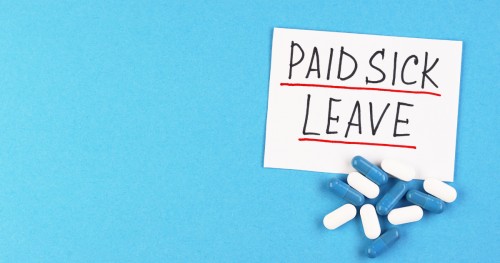How to pay yourself as a freelancer with a limited company

This article relates only to freelancers operating through their own limited company and not to those freelancers operating on a sole trader (self-employed) basis, whose pay considerations I have already outlined for FreelanceUK readers here, writes chartered accountant Graham Jenner, founder of tax advisory Jenner & Co.
Dual tax liability
The first thing to note about working through your own limited company is that, although you own the company and you work for the company, it is a separate legal entity to you.
This means the company will have a tax liability on the profits it makes and, then you may have a personal tax liability on income you take from the company.
Next, consider that money is taken from your company by you either as salary or dividends and very often, both.
Salary + dividends: explained
In fact, freelancers who operate through their own limited company will typically take a small salary and will take the rest of their income as dividends.
The reason for this is that National Insurance is not payable on dividend income as it is not earned income. Dividends are a distribution of the company’s profits to the shareholder.
There is no set or laid down amount that a company must pay its director as a salary -- as National Minimum Wage regulations do not apply. Directors are free, therefore, to pay a small salary, likely to be at a level where little or no national insurance is payable.
There are two types of National Insurance (NI) payable on salary, 13.8% Employers NI (paid by the company) and 12% Employees NI (paid by the individual). So, paying dividends rather than salary can give quite a significant saving.
Let’s get numerical
Be aware, the following example and guidance assumes that the director takes a salary of £8,840 per annum (p.a.), on which no NI is payable.
First, we have to work out the tax for the company.
Let us assume that the company makes £50,000 profit after all business costs, but before any salary is taken.
The director’s salary is £8,840 as noted above, reducing the profit to £41,160. The company’s corporation tax on this, applicable at 19%, is £7,820.
This leaves the company with £33,340 profit after tax, which is available to be paid to the shareholder as dividends.
Let’s recap those figures:
Company tax
Profit 50,000
Salary 8,840 (No Employer NI due, as it’s below threshold)
Profit after salary, before tax 41,160
Corporation tax @ 19% 7,820
Profit after tax 33,340 (available for dividends)
Personal tax
Salary from above 8,840 (No Employers NI due as below threshold
No tax due on this as covered by personal allowance)
Dividend from above 33,340 (assuming the decision is made to pay the max dividend; but please see the ‘ALERT’ below)
Total income 42,180
Less Personal allowance 12,570
Taxable income 29,610
Dividend allowance 2,000
Dividends subject to dividend tax 27,610
Dividend tax thereon at 7.5% 2,071
Calculating your limited company freelancer ‘take-home pay’
Salary from above 8,840
Dividends from above 33,340
Tax on dividends from above -2,071
Net income 40,109 p.a. (or £3,342 pm or £771 pw)
N.B. If you’re crunching the numbers yourself, it is easier to work on annual figures and then divide the net by 12 or 52 to obtain the net income per month or week.
ALERT: The company can only pay out in dividends up to the amount of realised cumulative after-tax profits.
For freelancers, profits in the accounts will generally be realised profits.
Cumulative means that any losses brought forward have to be covered by subsequent profits before dividends can be paid. Of course, it also means that profits brought forward, not already paid out as dividends, can be added to the year’s profit in determining how much is available to be paid as dividends.
Higher rate tax
The higher rate tax threshold is reached when dividends are £43,430, assuming £8,840 salary. The company would need a profit of £62,457 for the year before salary and tax, to be able to pay this level of salary and dividends.
If the company made more profit than that, and the director wanted to pay larger dividends, then, for each additional £1,000 of profit, £190 of corporation tax is due, leaving £810 post-tax profit available for additional dividends. The individual would then pay 32.5% tax (as then in the higher rate), leaving £546.75 of extra take-home pay.
Use it or lose it
Further consider that if you don’t need to take more in dividends than that amount (£43,430), there is a good argument for paying right up to that amount but not further. Paying up to that amount means you fully utilise the amount available at basic rate tax – if you don’t use it fully it is lost.
Paying above that amount, when you don’t need to, creates a higher rate tax liability, whereas leaving those profits in the company to be paid at a later date could enable them to be taken in a year when only basic rate tax applies e.g. in a year when there is little or no work (either due to the market, or by choice – perhaps even on retirement).
Where tax does get taxing (cont.)
Note that, at £100,000 income (salary plus dividends), £1 of personal allowance is lost for every £2 of income over £100,000, resulting in additional tax of 16.25% (on top of the 32.5% dividend tax) on any dividends paid which take the income to between £100,000 and £125,140. This results in an effective overall tax charge of around 60% on income within that band!
There is, therefore, a big incentive not to take income at that level. Assuming you don’t need that money to live on, options to consider are:
Also, if income is over £150,000, then any dividends paid that take income into this so-called ‘Additional’ tax rate bracket are taxed at 38.1%. This gives an effective rate on those dividends of almost 50% (including the 19% corporation tax).
Making provision to pay HMRC
As both corporation tax and personal income tax are payable in lump sums, it is easy to feel that there is more money available than there really is – and, perhaps, be tempted to take additional sums. It is well worth setting aside an estimated provision for tax based on the above calculations.
Tax on other income
The above assumes that you do not have any other taxable income in the tax year. If you do, then you will need to treat that income as the first part of your overall income, using personal allowances against that income first.
Cashflow
In considering the above, it is important to factor in that sufficient cash should be left in the company to meet its liabilities as they fall due. This may mean restricting the amount that might otherwise be taken as a dividend – or, where possible taking the appropriate level of dividend for tax planning purposes, but lending back to the company some of the money to meet its cashflow requirements.
Accountant’s advice
Finally, if you are unclear on the amount of tax to set aside, or how much you should be taking from the company, ask your accountant.



Comment
Log in or create your account to react to the article.